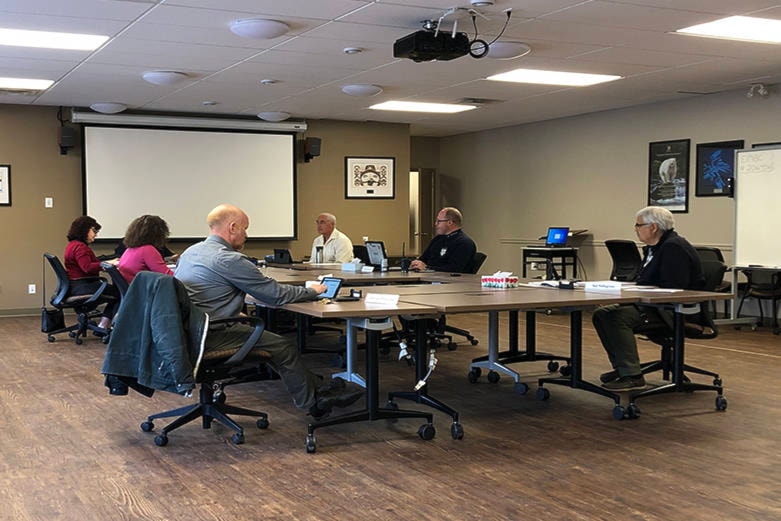The northern portion of the Regional District of Kitimat-Stikine is totally dependent on a single fibre optic cable route. One solution could mean putting a ring on it.
On May 22, TANEx Engineering Corporation presented a connectivity draft strategy to the regional board of directors, showing the state of connectivity services in the district.
One risk factor in the report is that there is only one fibre optic cable route into the district. It runs along Highway 16 and poses a connectivity risk because if it was damaged the whole district would be severely affected.
The Nisga’a and Tahltan Nations have secured fibre optic cable on the Northwest Transmission Line. That fibre backbone could be used to complete a ring of cable in the north, running through Terrace, Dease Lake, Watson Lake, Dawson Creek and Prince George.
“Once you’ve completed a ring like this a break in a fibre due to a forest fire or something means that all that connectivity can be rerouted around the ring so that there is no impact in service,” said Mike Thomas, TANEx president.
A northern ring would not only be beneficial for the regional district but for the province as a whole, but it is not expected to happen anytime soon.
“The reality is they are just plagued by excessive delays, these things take a long time to get through the funding process and even once they get through the funding process getting access to get these things built can take years,” said Mike Thomas.
The report found that connectivity in the district is diverse. The Terrace area and the southern part of the district is reasonably developed, with many service providers. That is contrasted by the northern areas in the district, where there is little to no service and Northwestel is the only provider.
“It’s really about making high speed internet connectivity available throughout your region to benefit all of your constituents regardless of where they live, so that they can benefit from the economy as well as important services,” said Kerri-Anne Thomas, TANEx project manager, to the district board.
Cellular service coverage in the district is far from total. Right now, over 600 kilometres of major roadways in the district do not have cellular service, a public safety issue because there is no access to emergency services.
The eventual goal is to have cellular coverage along all highway corridors in the regional district.
“Obviously we all know that it’s seriously lacking along many of the major roads, we think it’s about 28 per cent now,” said Kerri-Anne Thomas.
TANEx identified download and upload speeds for various types of homes and businesses in the region based on 50 megabytes per second download and 10 megabytes per second upload speeds (50/10).
Outside of municipalities, about 14 per cent of anchor tenants like schools, libraries, first responder facilities and healthcare facilities have 50/10 service. Within RDKS member municipalities that number is 42 per cent.
About one third of homes outside member municipalities have access to 50/10 service.
TANEx will present its final report to the regional district board in late July.
READ MORE: RDKS developing strategy to bring higher internet speeds to remote areas
@BenBogstie
ben.bogstie@terracestandard.com
Like us on Facebook and follow us on Twitter.
